14 years one-stop China custom CNC machining parts factory
Home / Product / Aluminum Parts /
As your aluminum CNC machining manufacturer, we have 40+ aluminum alloy materials, 100 CNC machining equipment, and 12 quality inspection processes. can provide you with a solution tailored to your specific needs.
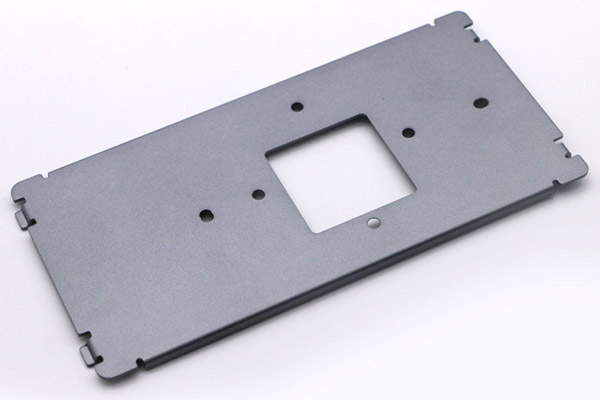
Product Specification:
13 years |
1 day |
0 pc |
90% |
|
Experience |
Lead time |
MOQ |
Countries customers |
| Custom Aluminum Powder Coating CNC Machining Parts Precision Machining - OEM ODM CNC Milling Services Manufacturer - China VMT |
Custom Aluminum Powder Coating CNC Parts Services
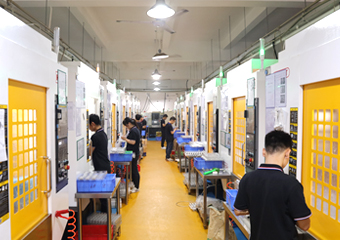
Custom Aluminum Powder Coating CNC Parts Prototyping Machining
100 CNC machining equipment provide you with prototype manufacturing, evaluation, design and testing. We can complete CNC machining and delivery of Aluminum Powder Coating CNC Machining prototype parts according to your specific requirements within 1 day. |
|
|
|
|
||
Custom Aluminum Powder Coating CNC Parts Surface Treatment |
Custom Aluminum Powder Coating CNC Parts Material |
||
|
Our own material library can provide you with special materials such as stainless steel, brass, copper, aluminum, etc., with material testing reports attached. There are professional CNC Aluminum Powder Coating CNC Machining machining project engineers to choose the right materials for you. |
We can provide a variety of surface treatment services based on your Custom CNC Aluminum Powder Coating CNC Machining machining project: polishing, anodizing, powder coating, laser engraving, custom graphics, etc. 12 quality inspection processes ensure that your CNC machined parts have a yield rate of 98%. |
| Still selecting materials for your custom CNC machined metal Aluminum Powder Coating CNC Machining? Different materials have different properties, and you can customize the CNC Aluminum Powder Coating CNC Machining to your liking. Here are some common materials used in manufacturing metal Aluminum Powder Coating CNC Machining: |
|
|
|
||
|
|
|
||
12 Quality Inspection Processes
| Refined production standards, providing you with precision parts with a pass rate of up to 98% |
|
|
|
|
||
| DFM Analysis | Dimensional Tolerance | Material Testing | ||
|
|
|
|
||
| CNC Machining | FQC detection | SPC / CKP | ||
|
|
|
|
||
| Problem Found | Problem Solving | OQC Detection | ||
|
|
|
|
||
| Surface Treatment | Full Inspection | Package |
| The following is the manufacturing process of customized CNC machined metal Aluminum Powder Coating CNC Machining. Due to the need to protect the rights and interests of customers, the following picture is not the manufacturing process of this part and is for reference only: |
 |
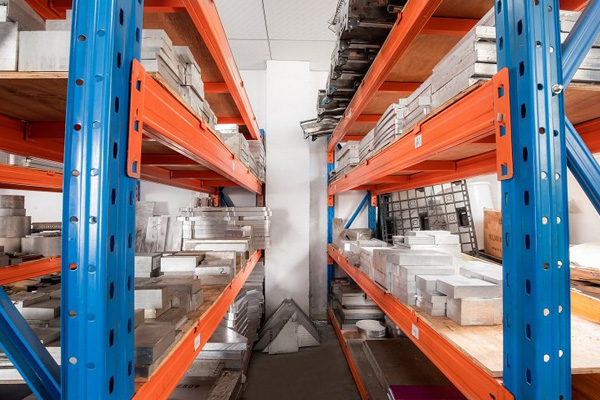 |
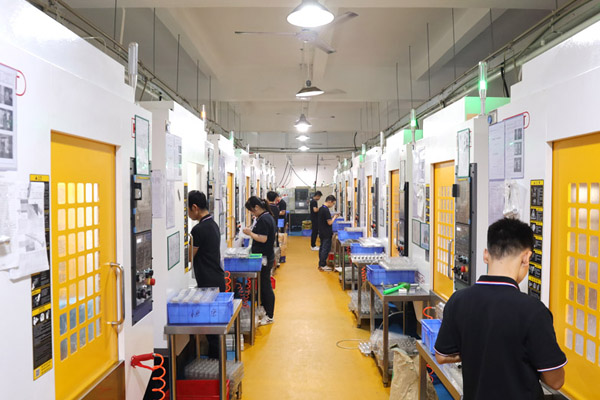 |
||
| DFM Analysis | Material | CNC Machining | ||
|
|
|
 |
||
| Surface Treatment | Quality Inspection | Package |
|
Quality Testing Equipment |
|
|
|
|
||
|
|
|
|
||
|
|
|
|
Custom Aluminum Powder Coating CNC Machining Parts Quality Assurance
|
Quality inspection reports are an important tool to ensure the quality and precision of your CNC machining work. We can provide a comprehensive overview of the finished product with a detailed test report on material and product performance, either from an in-house auditor or a third-party laboratory. Ensure finished product meets all customer requirements. |
|
Qualify Evaluation Report
For each order we receive, we can provide a list of quality inspection reports according to your processing requirements.
Inspection report
Certificate
ISO 9001:2015 IATF 16949:2015 ROHS Directive 12 patent certifications
|
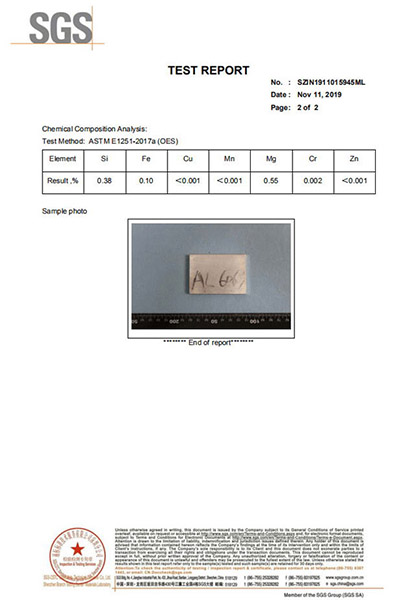 |
|
|
Custom Aluminum Powder Coating CNC Machining Parts FAQs
|
1. What is powder coating, and how is it applied to CNC-machined aluminum parts?
Powder coating is a dry finishing process where a fine powder made of resin, pigments, and additives is electrostatically applied to aluminum parts. The parts are then heated in an oven, where the powder melts and forms a durable, uniform coating. This process is often used for CNC-machined aluminum parts to improve their appearance, durability, and resistance to corrosion.
2. What are the advantages of powder coating aluminum CNC-machined parts?
Durability: Powder coating creates a tough, durable finish that resists scratches, chipping, and wear. Corrosion resistance: The coating forms a protective barrier that helps aluminum parts resist moisture, chemicals, and environmental elements, which extends their lifespan. Aesthetic versatility: Available in a wide variety of colors, textures, and finishes (matte, glossy, metallic), powder coating allows for customization of the appearance. Environmental friendliness: Powder coating produces less waste and emissions compared to liquid paints since the process doesn’t require solvents. Uniform finish: The electrostatic application ensures an even coating on complex geometries, without drips or runs that can occur with liquid paints.
3. What colors and finishes are available for powder coating CNC-machined aluminum parts?
Powder coating offers a wide range of colors and finishes. Common options include: Glossy, semi-gloss, and matte finishes Textured finishes: For added grip or decorative purposes. Metallic or pearlescent finishes: For a premium, reflective look. Custom colors: Many manufacturers offer color-matching services to achieve specific brand colors or requirements.
4. How does powder coating compare to anodizing for aluminum CNC parts?
Durability: Both processes enhance durability, but powder coating provides better protection against physical impacts like scratches and chips. Anodizing, however, is harder and more wear-resistant for mechanical abrasion. Corrosion resistance: Powder coating creates a thicker barrier against moisture and chemicals, making it ideal for outdoor applications, while anodizing offers natural oxidation resistance. Aesthetic options: Powder coating offers a broader range of color and texture options compared to anodizing, which typically results in a more limited metallic look. Thickness: Powder coating adds a thicker layer compared to anodizing, which could affect tight tolerances.
5. How thick is the powder coating on CNC-machined aluminum parts?
The thickness of powder coating typically ranges from 50 to 150 microns (0.05 to 0.15 mm) depending on the application and desired finish. The thicker the coating, the more durable and resistant to wear the surface will be. However, thicker coatings may not be suitable for parts requiring tight tolerances.
6. What are the key preparation steps before powder coating aluminum CNC parts?
Proper surface preparation is crucial for good adhesion and a smooth finish. Common preparation steps include: Cleaning: Removing oils, grease, and contaminants from the aluminum surface. Blasting: Media blasting (sandblasting or bead blasting) is often used to roughen the surface and improve adhesion. Chemical pretreatment: Aluminum may undergo an etching or conversion coating process, such as chromate conversion, to improve corrosion resistance and bonding of the powder coat. Masking: Critical surfaces or threads that should not be coated are masked to prevent powder from adhering.
7. Can powder coating be applied to parts with complex geometries?
Yes, powder coating can be applied to parts with complex shapes, edges, and recesses. The electrostatic process ensures that the powder is attracted to the part evenly, including hard-to-reach areas. However, very deep recesses or tight areas may need special attention to ensure complete coverage.
8. What is the curing process in powder coating, and how does it affect aluminum parts?
After the powder is applied, the aluminum parts are placed in an oven where the temperature is raised to approximately 350°F to 400°F (175°C to 200°C). The powder melts and forms a uniform coating as it cures, chemically bonding to the aluminum surface. The curing time typically ranges from 10 to 30 minutes, depending on the part's size and the coating material.
9. How does powder coating impact the dimensions of CNC-machined aluminum parts?
Powder coating adds a layer of thickness to the surface, which typically ranges between 50 to 150 microns. This should be considered during the design phase, particularly for parts with tight tolerances or mating surfaces. In such cases, masking or machining the part with allowance for the coating thickness can ensure proper fitment.
10. Can custom designs, logos, or patterns be applied with powder coating?
Yes, custom designs such as logos or patterns can be achieved through stenciling, masking, or multicolor layering techniques. For example, a base coat of powder can be applied and then masked off to apply a second color, creating intricate designs.
11. What is the durability of powder-coated CNC-machined aluminum parts?
Powder-coated aluminum parts are highly durable and resistant to: Scratching and chipping: The tough coating can withstand rough handling and daily use. UV damage: Powder coatings are resistant to fading and discoloration caused by UV exposure. Corrosion and chemicals: The coating protects the underlying aluminum from environmental factors like moisture, chemicals, and salt, making it suitable for outdoor or marine applications.
12. What are the environmental benefits of powder coating?
Powder coating is an eco-friendly alternative to traditional liquid paints. It produces minimal waste, as excess powder can be collected and reused. Additionally, powder coatings are solvent-free, meaning they emit no volatile organic compounds (VOCs) during application, reducing air pollution and health hazards.
13. How does powder coating compare to traditional wet paint for aluminum parts?
Durability: Powder coating is more durable and chip-resistant than traditional liquid paint. Thickness: Powder coating typically results in a thicker, more protective layer than wet paint. Finish quality: Powder coating provides a smoother, more uniform finish without the risk of runs, drips, or brush marks common with liquid paints. Environmental impact: Powder coating is more environmentally friendly due to its lack of VOCs and recyclable overspray.
14. What industries commonly use powder-coated aluminum CNC parts?
Powder-coated aluminum parts are widely used in industries that require both aesthetics and durability, including: Automotive: Wheels, frames, trim, and other decorative or functional components. Architecture and construction: Window frames, doors, railings, and structural elements. Consumer goods: Electronics housings, kitchen appliances, furniture, and lighting fixtures. Industrial and marine applications: Machinery parts, outdoor equipment, and marine hardware exposed to harsh environments.
15. What are the limitations of powder coating for CNC-machined aluminum parts?
Thicker coating: Powder coating adds a significant layer of material, which may not be suitable for parts requiring precise tolerances. Repair difficulty: While durable, if powder-coated parts are scratched or damaged, repairs can be more challenging compared to traditional paint, which can be touched up easily. Application to heat-sensitive components: Since powder coating requires curing at high temperatures, it is not suitable for components that cannot tolerate heat.
16. How long does powder coating last on CNC-machined aluminum parts?
Powder coating can last 10 to 20 years or more, depending on the environment and conditions the part is exposed to. It offers excellent protection against corrosion, UV rays, and daily wear, making it a long-lasting surface finish for aluminum parts.
17. Can powder-coated aluminum parts be re-coated or repaired?
Yes, powder-coated parts can be re-coated if necessary. However, the original coating must first be stripped using a chemical or mechanical process. Once stripped, the part can be cleaned, prepped, and powder-coated again. Minor damage or scratches to the coating may not be repairable without stripping and re-coating the entire part.
18. How do you maintain powder-coated aluminum parts?
Maintenance of powder-coated parts is simple: Regular cleaning: Use mild soap and water to clean the surface and remove any dirt or grime. Avoid abrasive cleaners, as they can damage the coating. Avoid harsh chemicals: Prolonged exposure to strong chemicals may degrade the powder coating over time. Inspect regularly: Periodic inspection of the coating can help detect any damage early, preventing corrosion or further wear.
19. What is the typical lead time for custom powder-coated CNC-machined aluminum parts?
Lead times depend on the complexity of the part, the required surface preparation, and the type of powder coating used. Generally, the lead time for powder-coated CNC parts is 2 to 4 weeks. For small-batch or prototype runs, shorter lead times may be possible.
20. How do I get a quote for custom powder-coated CNC aluminum parts?
To get an accurate quote, provide the following information: CAD drawings or specifications for the part. Material type (e.g., aluminum alloy). Desired powder coating color and finish. Quantity of parts needed. Any special surface treatment or preparation requirements before powder coating. |
| We hope these CNC metal Aluminum Powder Coating CNC Machining faqs answer your questions. If you have more questions or require further assistance, please feel free to contact our dedicated customer support team. We're here to help you build the perfect custom CNC Aluminum Powder Coating CNC Machining just for you. |
Contact Us
 Related suggestion
Related suggestionGive us a call or send an inquiry to our emailbox, we will answer your doubts according to your customers' requirements, and quote you immediately.
